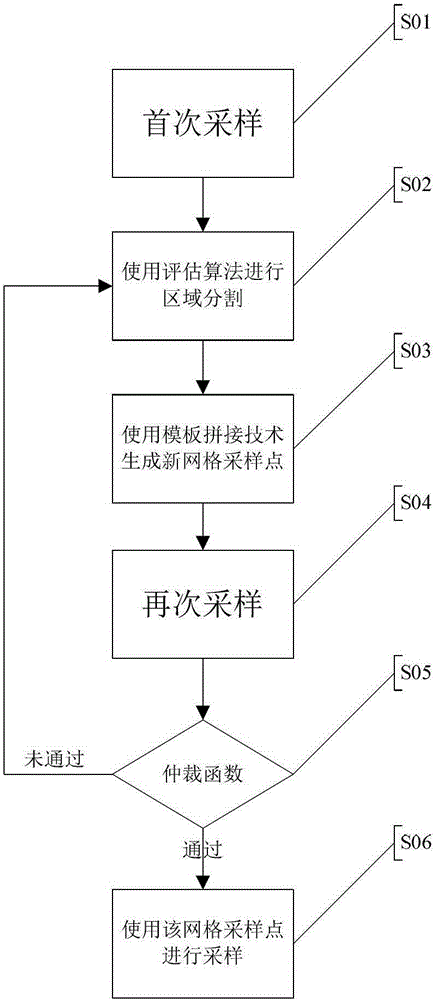A Two-Dimensional Planar Sampling Method Based on Adaptive Technology
A two-dimensional plane, self-adaptive technology, applied in image data processing, instrumentation, computing and other directions, can solve the problems of sharp increase in the number of sampling points, loss of analog signal information, slow speed, etc., to achieve a small number of sampling points, sampling effect best effect
- Summary
- Abstract
- Description
- Claims
- Application Information
AI Technical Summary
Problems solved by technology
Method used
Image
Examples
Embodiment Construction
[0032] In order to make the purpose, technical solution and advantages of the present invention more clear, the overall steps of the algorithm, the steps of grid sampling point generation and splicing technology will be further introduced below in conjunction with the accompanying drawings and specific embodiments.
[0033] like figure 1 Shown, the concrete realization steps of the present invention are as follows:
[0034] Step S01: use the initial uniform grid to sample the surface of the object for the first time, and save the result to the computer;
[0035] Step S02: Perform low-pass filtering on the sampling points, remove additive noise, etc., then evaluate the denoised sampling results by the evaluation algorithm, and segment the entire sampling area according to the frequency bandwidth characteristics of the object shape and the sudden change signal, Obtain sub-regions with different frequency ranges, and then use the evaluation algorithm to quantify the spectrum of ...
PUM
 Login to View More
Login to View More Abstract
Description
Claims
Application Information
 Login to View More
Login to View More - R&D
- Intellectual Property
- Life Sciences
- Materials
- Tech Scout
- Unparalleled Data Quality
- Higher Quality Content
- 60% Fewer Hallucinations
Browse by: Latest US Patents, China's latest patents, Technical Efficacy Thesaurus, Application Domain, Technology Topic, Popular Technical Reports.
© 2025 PatSnap. All rights reserved.Legal|Privacy policy|Modern Slavery Act Transparency Statement|Sitemap|About US| Contact US: help@patsnap.com



